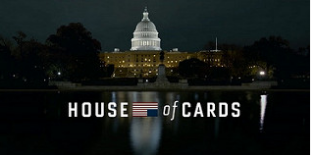Netflix: Spend, Borrow, Issue Stock, Repeat.
There are bubbles, and then there are bubbles. Jim Grant related at his recent conference and subsequent newsletter that the Republic of Ireland sold four billion euros work of 5-year bonds with a coupon of zero, zip, zilch. The Emerald Isle sold the bonds at par or a bit over, for a negative yield. “And you know the issue was oversubscribed by 2 ½ :1 and that hedge funds--hedge funds--accounted for 17% of the book. So 2% and 20% on nothing, or less than nothing.”
Granted mused, “That people are lending money money at less than zero in the certainty of losing much of their purchasing power must make today’s bond bubble the world’s greatest bubble.”
To earn an actual yield,consider the recent offering from Netflix, a company whose stock puts the N in FAANG. Financially, Netflix would seem to be like one of its premiere shows “House of Cards.” The ubiquitous entertainment platform spews negative cash flow with subscriber fees not coming close to floating the company’s financial boat.
In 2015, Netflix’s negative cash flow was $750 million. Last year, negative cash flow was $1.47 billion and through 9 months this year, $1.3 billion. Be that as it may, the company just sold $1.6 billion of bonds with a yield of 4.875%.
Netflix is a staple in millions of homes, but can’t seem to produce profits. But, it doesn’t need to, for now. Wolf Richter writes,
Netflix, whose shares went from $9.94 to $192.47 in five years, is on a peculiar and accelerating treadmill: It needs to borrow ever larger amounts just to cover its ever-larger negative cash flows year after year. These negative cash flows are mostly caused by ever more spending on its proprietary streaming entertainment programming that is needed to attract ever more subscribers, who are needed to support its gigantic market capitalization of $84 billion. And that gigantic stock market capitalization is needed as a guarantee of sorts for the bondholders…. If this seems a bit circular, it’s because it is.
Just six months ago, the “Netflix European entity sold €1.3 billion (currently $1.5 billion) of 10-year unsecured junk bonds in Europe at a yield of 3.625%. This is a textbook example of “Reverse Yankees” – euro-denominated bonds sold by US companies in Europe to benefit from ludicrously low costs of borrowing, including an average junk-bond yield that is below the US Treasury yield,” Richter explains.
A year ago the company sold a billion dollars worth of bonds and, in addition, has the following debt outstanding:
$500 million of 5.375% notes due 2021
$700 million of 5.5% notes due 2022
$400 million of 5.75% notes due 2024
$800 million of 5.875% notes due 2025.
Since 2013, Netflix debt has exploded from $1.3 billion to $8.2 Billion.
Netflix says in their financial release,
Our future largely lies in exclusive original content that drives both excitement around Netflix and enormous viewing satisfaction for our global membership and its wide variety of tastes. Our investment in Netflix originals is over a quarter of our total P&L content budget in 2017 and will continue to grow. With $17 billion in content commitments over the next several years and a growing library of owned content ($2.5 billion net book value at the end of the quarter), we remain quite comfortable with our ability to please our members around the world. We’ll spend $7-8 billion on content (on a P&L basis) in 2018.
The company strategy is made very clear,
Free cash flow in Q3 totaled -$465 million vs. -$506 million last year and -$608 million in Q2’17. There is no change to our expectation for FCF of -$2.0 to -$2.5 billion for the full year 2017. Negative FCF, despite growing operating income, is due to growth of our content spend, original content in particular, where we pay for the titles before consumers enjoy the content, and the asset is amortized by estimated viewing over time. We anticipate financing our capital needs in the debt market as our after-tax cost of debt is lower than our cost of equity.
Spend, borrow, issue stock, repeat. Unless the stock crashes and then the equation goes to hell. Bondholders are taking stock market risk to receive bubble bond market returns. “I don’t remember ever having seen crazier times of more pandemic proportions,” writes Richter.
Crazy times, indeed.






